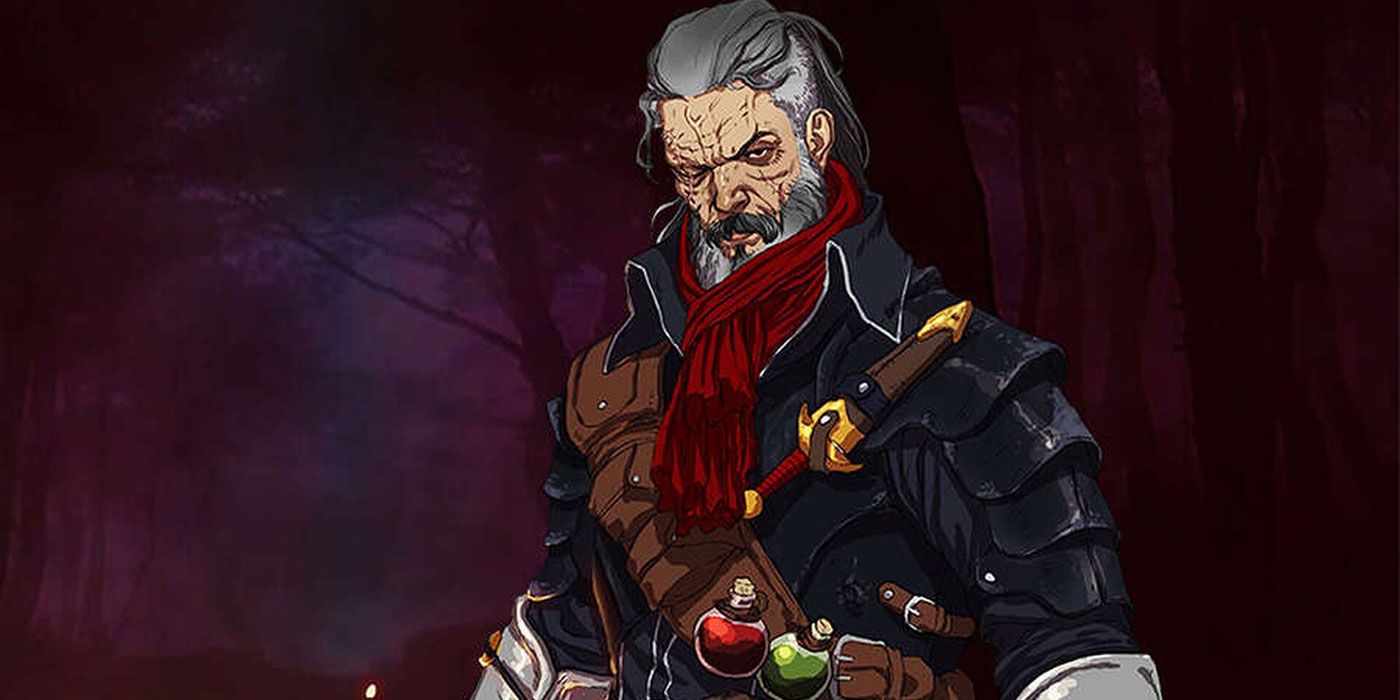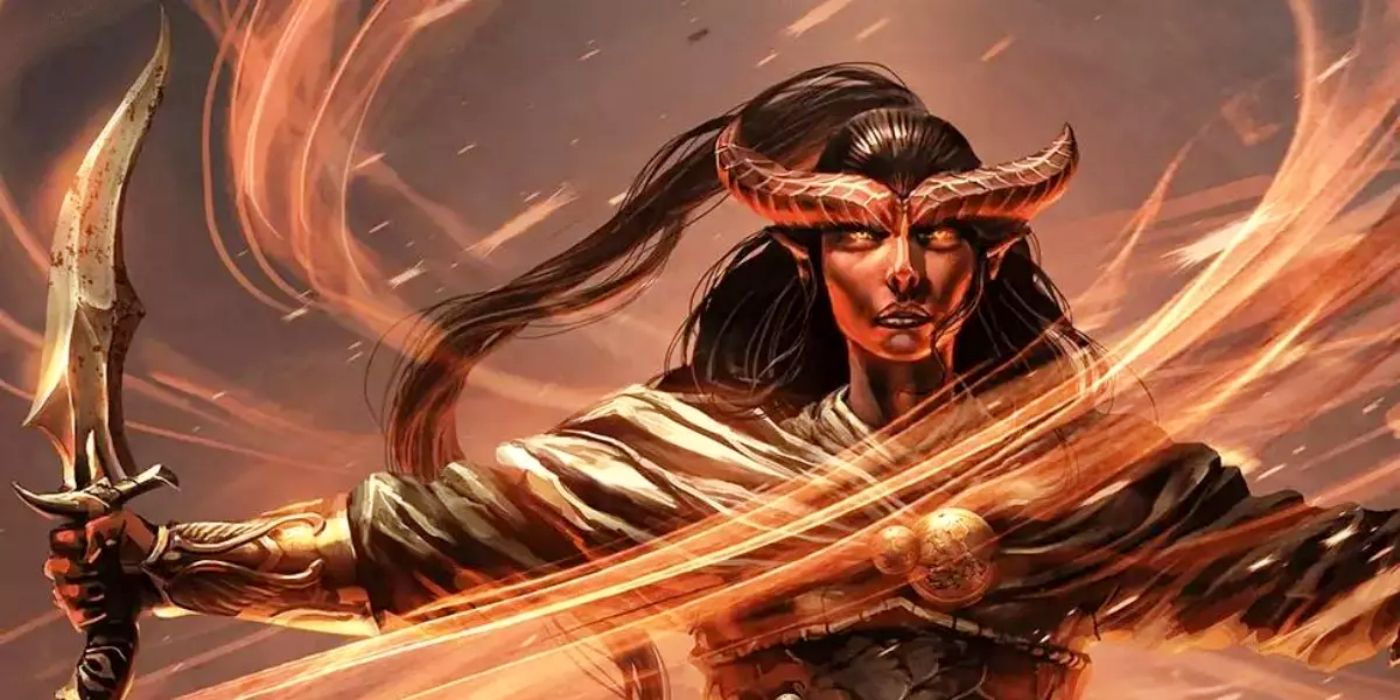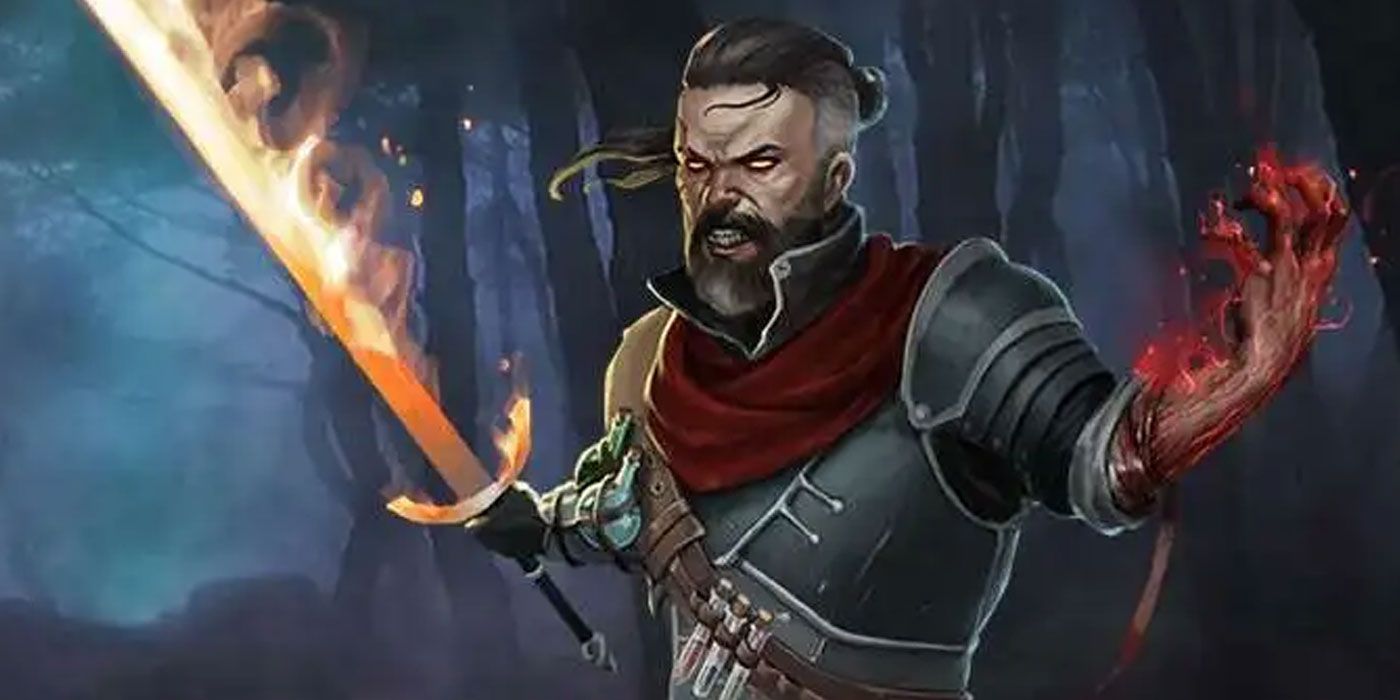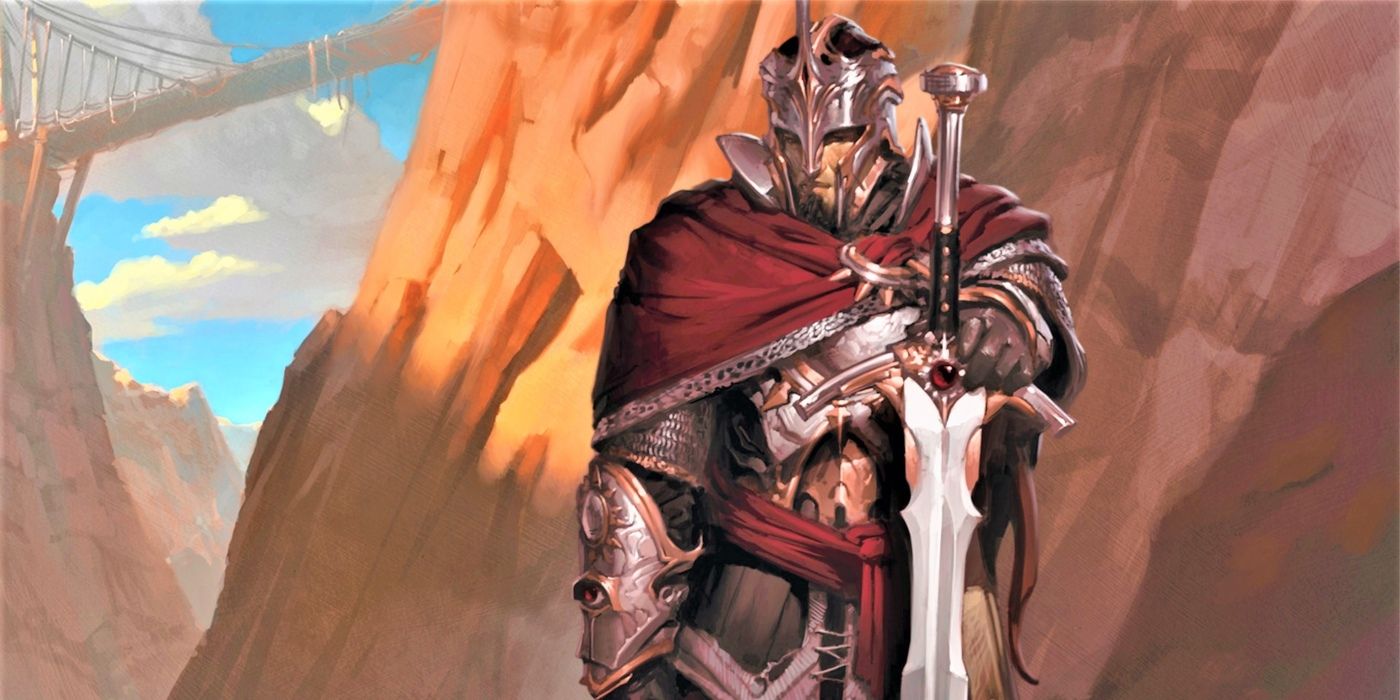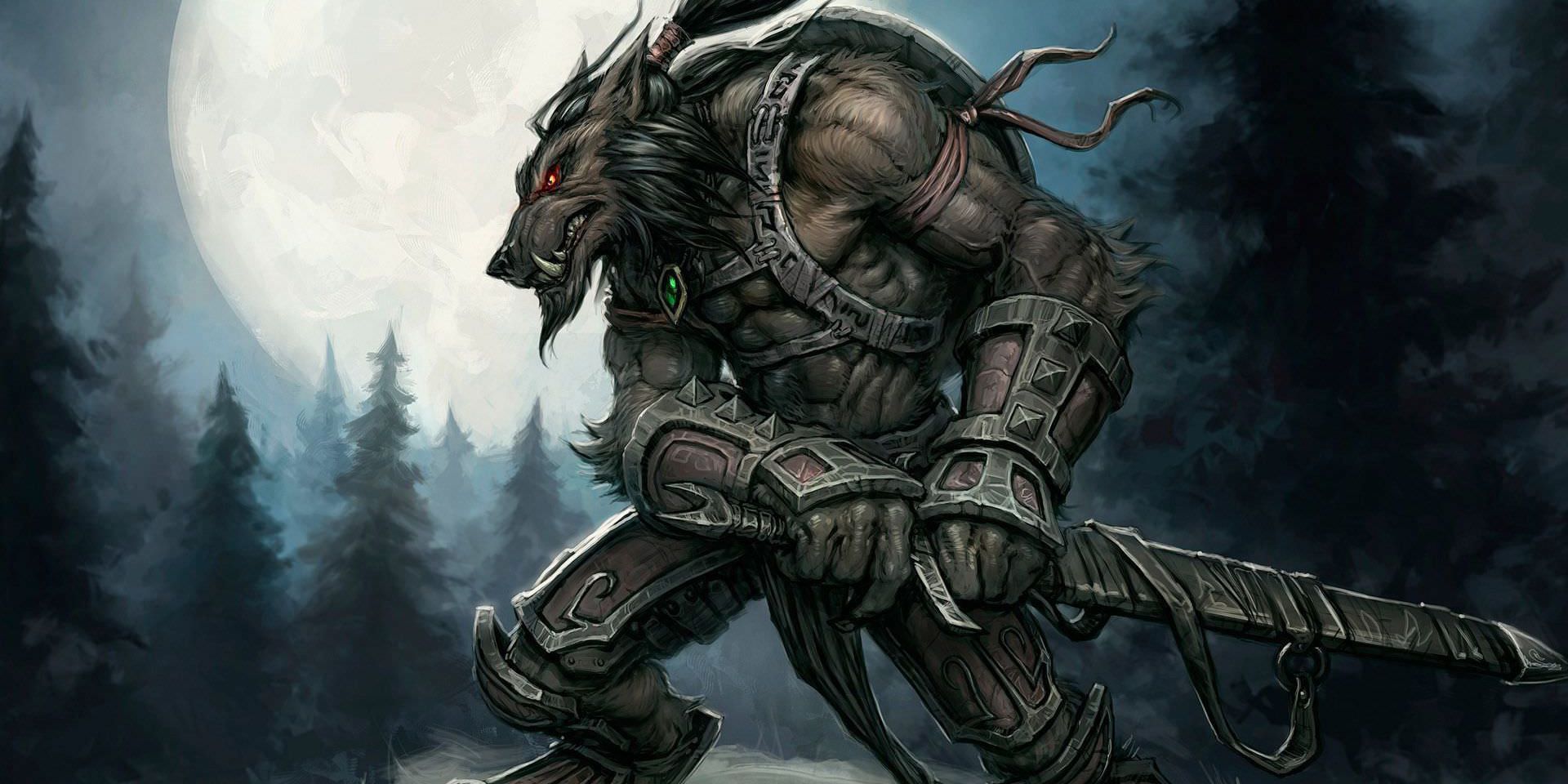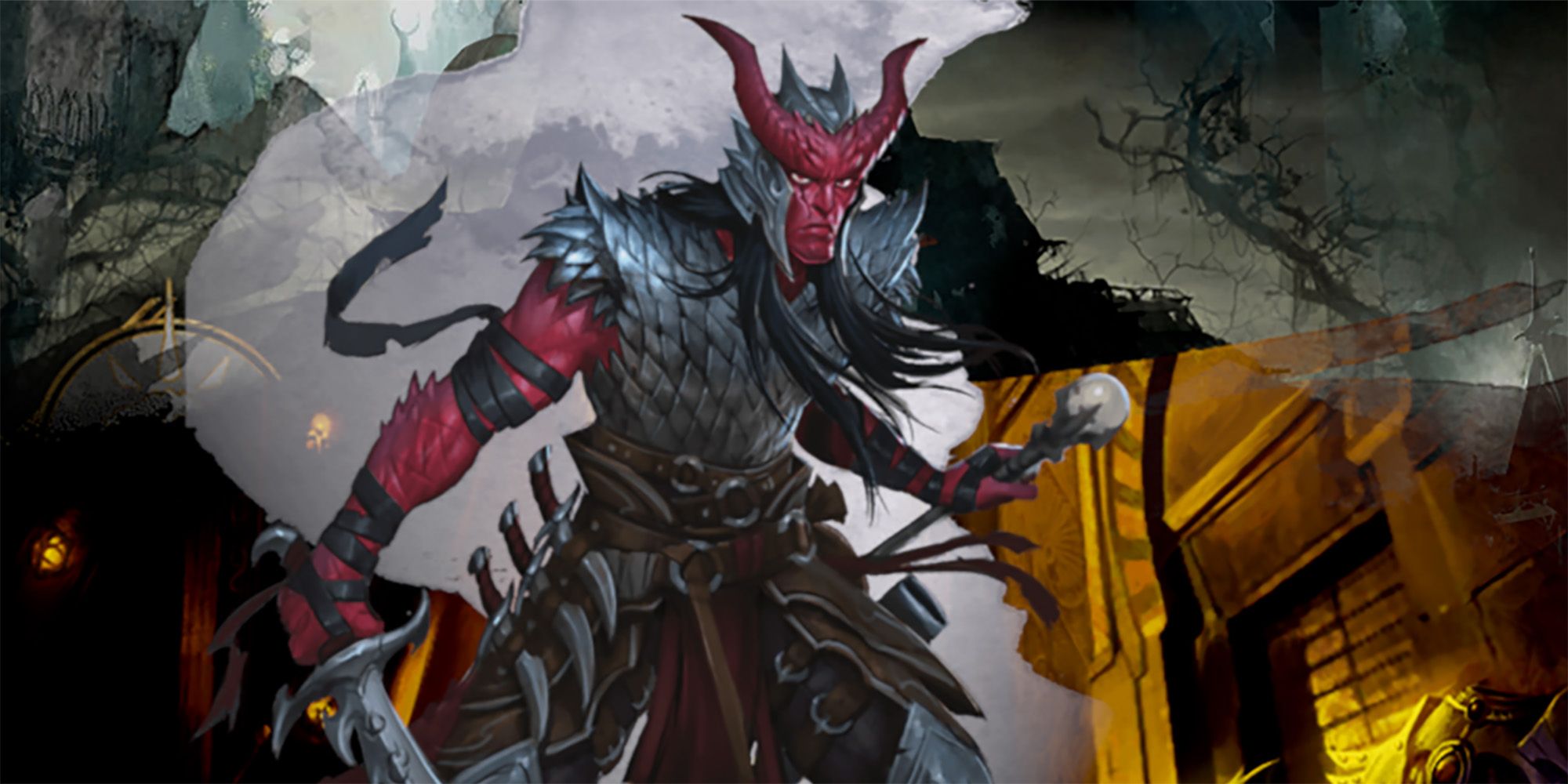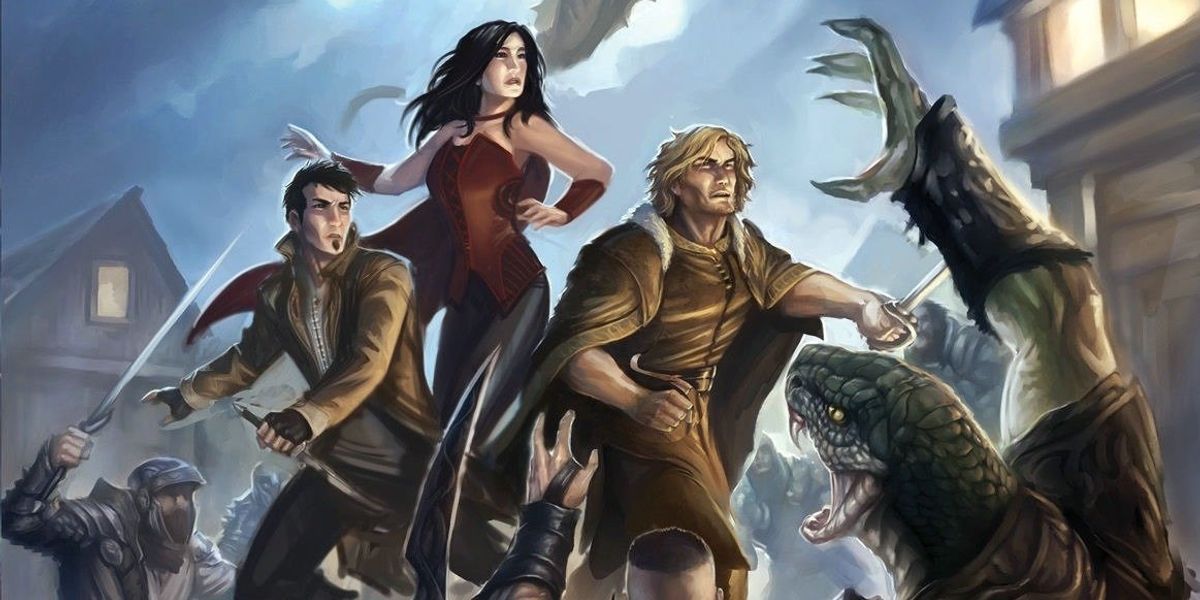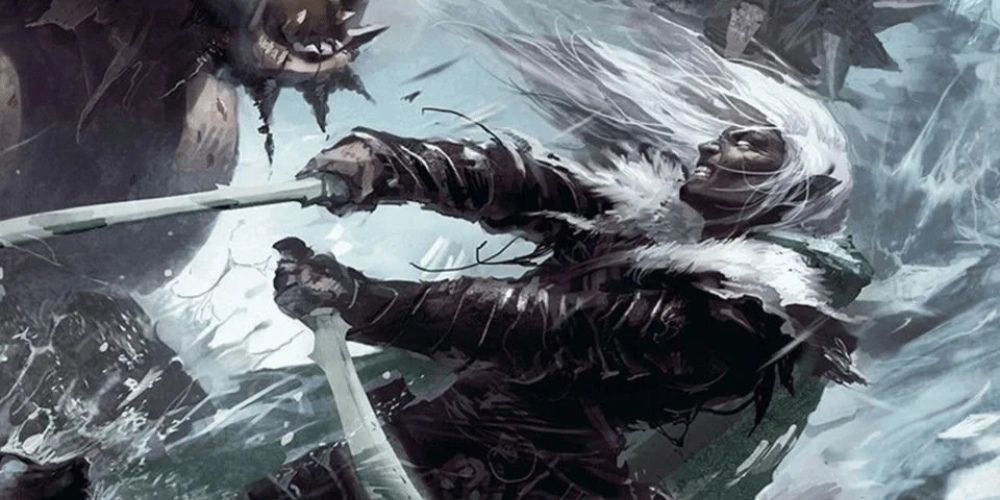Quick Links
The blood hunter is an unofficial Dungeons & Dragons Fifth Edition class created by Critical Role's Matt Mercer. Despite its unofficial nature, it's far more widespread and included than most homebrew, not least due to being available on D&D Beyond. Blood hunters pair martial combat with unique abilities that tap into blood's occult potential.
Blood hunters are more varied and versatile than many D&D 5e martial classes. They have decision points for their ability scores, blood curses, subclasses, and more. This can make them harder to build than many D&D 5e characters. Nonetheless, a few vital decisions can lead to a perfectly capable blood hunter that can terrorize the party's nightmarish foes.
Updated September 6th by Isaac Williams: The blood hunter remains a widely popular D&D 5e class despite its unofficial status as Critical Role homebrew. Its unique mechanics can make it harder to build than other classes. This article has been updated to give even more information about the best blood hunter build in D&D 5e.
Blood Hunter Build Summary Table
|
Ability Scores (In Order Of Importance) |
Dexterity, Wisdom, Constitution, Strength, Intelligence, Charisma |
|---|---|
|
Race |
Human/Custom Lineage, Satyr, Orc |
|
Background |
Far Traveler, Sailor |
|
Blood Hunter Order |
Ghostslayer, Lycan |
|
Feats |
Tough, Resilient: Wisdom, Fey Touched |
|
Crimson Rites |
Rite of the Storm, Rite of the Oracle |
|
Blood Curses |
Blood Curse of the Marked, Blood Curse of the Eyeless |
|
Multiclass |
Ranger, Cleric |
Perks Of A D&D Blood Hunter Build
Blood hunters have unique flavor that no other D&D class can replicate. They're supernatural warriors who have been altered in their very form to hunt down fearsome enemies. They use martial weapons and enhance them with abilities empowered by their own blood. Blood hunters use distinctive mechanics that evoke a supernatural feel while being distinct from spellcasting. The blood hunter is the best class in D&D 5e for players who want to combine prowess and eldritch talent to dominate their foes.
Blood Maledict is a blood hunter's central feature. This gives the class access to a series of blood curses that twist and alter other beings in combat. A blood hunter can use their Blood Maledict to blight an opponent's eyes and make their attacks less accurate, root a creature to the ground, cause a defeated creature to make a single attack as they fall unconscious or dead, and much more. They combine short rest recharge with a unique amplification mechanic that gives extra effects at the cost of hit points.
Crimson Rite is a combat buff blood hunters will use in almost every fight throughout a campaign. It damages the blood hunter by one roll of their Hemocraft Die and causes their weapon attacks to deal an additional Hemocraft Die's worth of damage until they take a rest. It's a high-risk, high-reward buff that makes blood hunters effective combatants if they're willing to put themselves at risk for it.
Brand of Castigation emphasizes a blood hunter's abilities to track and weaken a single target. The blood hunter brands a foe and gains the ability to follow its location across the world. In addition, it deals damage each time the branded creature attacks the blood hunter or a nearby ally. The higher level Brand of Tethering buffs this ability to deal more damage and hinder teleportation and planar travel.
Dark Augmentation builds on the supernatural changes wrought on a blood hunter's body. It improves their movement speed and bolsters their Strength, Dexterity, and Constitution modifiers by one of their primary ability modifiers. Few martial characters in D&D 5e get this blend of mobility and survivability.
Best Stats For A Blood Hunter Build
Blood hunters have more freedom in their ability scores than most D&D 5e classes. Their design encourages them to use either Strength or Dexterity for weapon attacks. With a DM's permission, their Hemocraft features can use Wisdom instead of Intelligence.
A blood hunter should prioritize Dexterity and wield finesse or ranged weapons. The class only gets access to medium armor, meaning that Dexterity is vital to keep their Armor Class high. Dexterity avoids the need to juggle multiple stats while being equally effective for most fighting styles. Strength is only vital for blood hunters who want to use great weapons in combat.
Similarly, Wisdom is much more valuable than Intelligence. Wisdom is a more important saving throw and is associated with some of D&D 5e's most important skills like Perception and Insight. Intelligence has few synergies with other parts of D&D. It's less useful unless the party urgently needs somebody good at skills like Arcana and History.
Constitution is another necessary ability score for blood hunters. They're somewhat more fragile than other martial characters, lacking heavy armor and damaging themselves to use many abilities. High Constitution is needed to prevent Crimson Rite and amplified Blood Curses from doing the enemy's work for them.
The Best Race & Background For A Blood Hunter
Blood hunters benefit from variant human or custom lineage as much as most D&D 5e builds. A free feat is always valuable, particularly with the number of ability scores blood hunters need to keep high. Blood hunters don't get many opportunities for feats, and the right one can contribute more to a build than any racial abilities.
Alternatively, the satyr is an excellent option. Its high movement speed synergizes with Dark Augmentation to make a significantly mobile character who can outstrip most ground-based enemies comfortably. Its Magic Resistance bolsters a blood hunter's defenses significantly, particularly as they end up with high saving throw bonuses due to Dark Augmentation.
Orc's mobility and durability also make it a solid D&D 5e race for Blood Hunters. Adrenaline Rush helps them get into combat that bit more quickly while replacing damage with temporary hit points. Relentless Endurance also provides a last-chance shot at survival if a blood hunter gets in over their head with melee combat and self-damage.
D&D 5e blood hunters want physical skills from their background but also shouldn't neglect their Wisdom or Intelligence-based skills. Far Traveler's Insight and Perception capitalize on a blood hunter's likely high Wisdom. Sailor gives Athletics and Perception to compensate for low-Strength blood hunters' climbing and running, or make high-Strength ones suitable grapplers.
Best Blood Hunter Orders
Each blood hunter order has its strengths and reasons to take it. However, the Order of the Ghostslayer is the most practical across most D&D 5e campaigns. Blood Curses only work on creatures that actually have blood. The Ghostslayer circumvents this restriction to target D&D monsters like undead, constructs, and more. Its Rite of the Dawn is a buffed Crimson Rite that is equally or more effective than the base class options against almost every type of enemy in the game. Its other options share this theme of broad usability and buffs.
Order of the Lycan is a more specialized D&D 5e blood hunter subclass that suits melee combat enthusiasts. Abilities like Hybrid Transformation encourage a savage fighting style based on unarmed strikes that hit harder and more often than other blood hunters. Most of its features increase a character's durability or damage with little regard for situations besides combat.
Best 5e Feats for Blood Hunters
|
Blood Hunter Level |
Recommended Feat |
|---|---|
|
1 (Human/Custom Lineage Only) |
Fey Touched/Tough |
|
4 |
Ability Score Improvement: Dexterity |
|
8 |
Ability Score Improvement: Dexterity |
|
12 |
Resilient: Wisdom |
|
16 |
Crossbow Expert/Tough |
|
19 |
Ability Score Improvement: Wisdom |
Tough is one of D&D 5e's best feats for a blood hunter. It's never a poor choice for any character, but blood hunters are far more prone to taking damage than most classes. With Tough, a blood hunter can fight on the front lines and take constant damage from their own abilities without fear for their safety.
Fey Touched's flexible ability score increase and limited spellcasting suit a blood hunter well. Misty Step adds to their mobility for entering the fray, escaping dangerous enemies, or bypassing obstacles outside combat. A free Enchantment or Divination spell opens up many options for a D&D 5e blood hunter. In addition, its increase can push their Wisdom (or Intelligence) high enough to increase their modifier.
Resilient: Wisdom fills a notable hole in the blood hunter's defensive options. Blood hunters have excellent physical saving throws from Dark Augmentation. However, their base saving throws are Dexterity and Intelligence. Resilient: Wisdom boosts their saving throws against some of D&D 5e's most dangerous spells and can potentially increase their Wisdom modifier for Hemocraft powers.
Ranged blood hunters can make good use of Crossbow Expert. Crimson Rite boosts every one of a character's attacks. Making a third crossbow shot as a bonus action maximizes this potential increase. This is especially effective as Crimson Rite can last between combats, reducing the number of bonus actions the character spends buffing. However, blood hunters can struggle for feats to take D&D 5e's infamous Crossbow Expert and Sharpshooter combo.
Best Blood Hunter Crimson Rites And Blood Maledict Curses
The different Crimson Rites available are largely a flavor choice unless the party happen across something vulnerable to a specific damage type. Nonetheless, Rite of the Storm is more broadly useful as fewer creatures have resistance to lightning damage than fire or cold. At higher levels, Rite of the Oracle is more valuable than the other two options because of the rarity of psychic damage resistance. The Order of the Ghostslayer's Rite of Dawn is the ideal choice against almost every enemy type bar celestials.
The best Blood Maledict Curses don't require a saving throw upfront. These include ones with no saving throw at all or those that allow them at the end of the creature's turn. Blood Curse of the Marked is a reliable go-to for its passive damage increase that scales with the blood hunter's Hemocraft Die. Similarly, Blood Curse of the Eyeless affects attacks with no possible saving throw and can be Amplified to punish creatures with multiattack.
For more active D&D 5e blood hunter Blood Curses that affect foes, Blood Curse of the Muddled Mind is the bane of spellcasters everywhere. Disadvantage on Concentration saving throws can end game-changing spell effects before they tip the odds against the party. The Order of the Mutant's Blood Curse of Corrosion guarantees at least one turn of the Poisoned condition, with the potential for significant damage if Amplified.
Multiclassing A D&D 5e Blood Hunter
Ranger is a synergistic multiclass for a D&D 5e blood hunter. Many ranger subclass abilities increase damage with weapon attacks. The spell Hunter's Mark stacks with Crimson Rite. The two classes together can stack buffs until each strike deals immense damage. Taking the Druidic Warrior Fighting Style can lead to an unusual build where the character takes Shillelagh, increases their Wisdom as high as possible, and uses the same ability score for weapon attacks and Hemocraft features.
Cleric is a slightly more esoteric D&D 5e multiclass for a blood hunter that can be effective. A single level in cleric domains like War or Tempest gives heavy armor proficiency to make Strength-based blood hunters more effective. Many cleric features emphasize Wisdom score over anything else and can provide some new tricks for a blood hunter's largely-martial toolkit.

